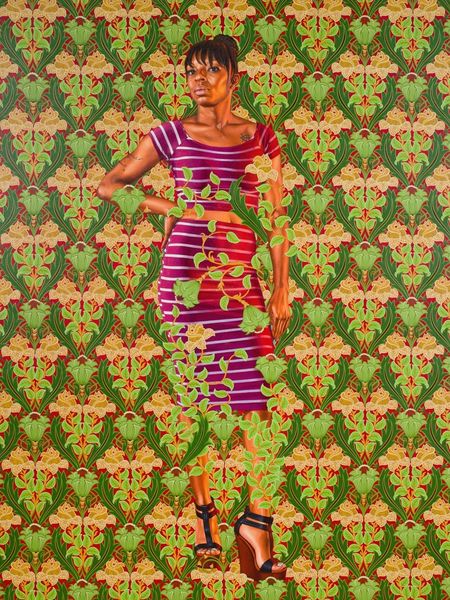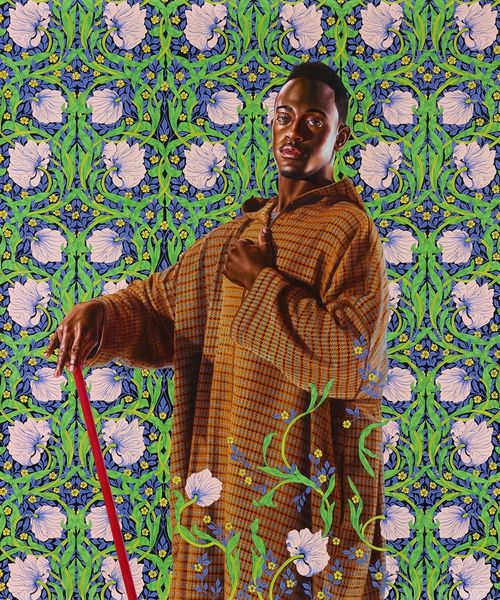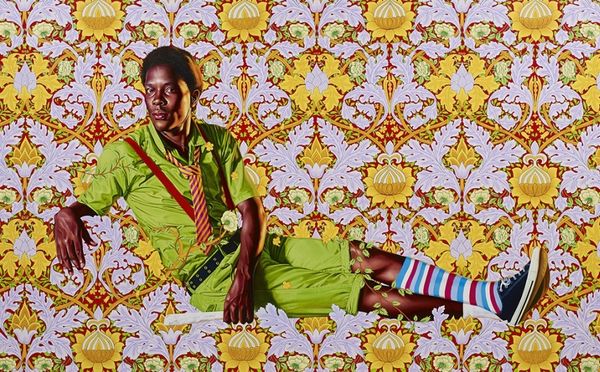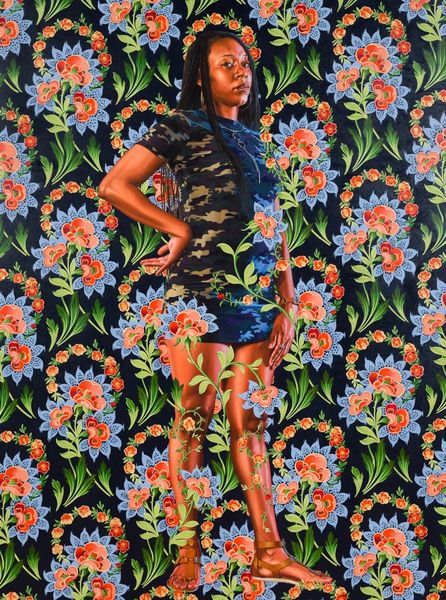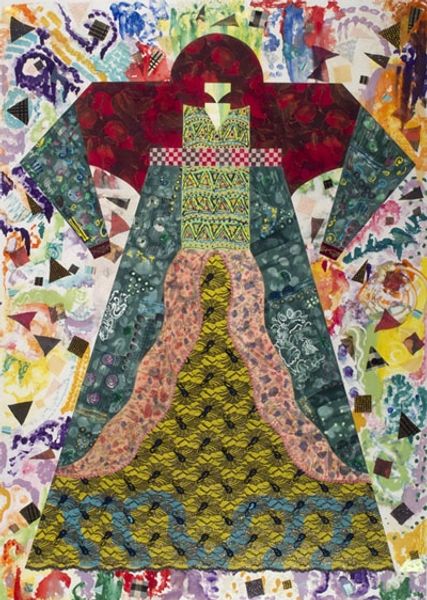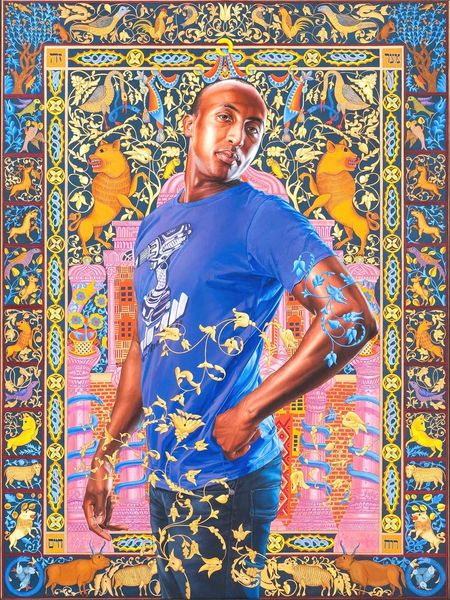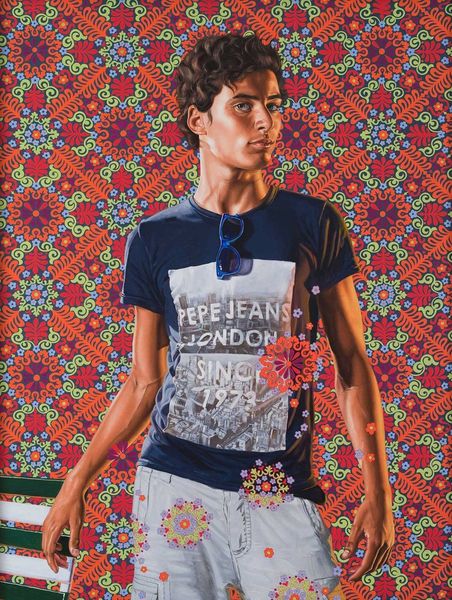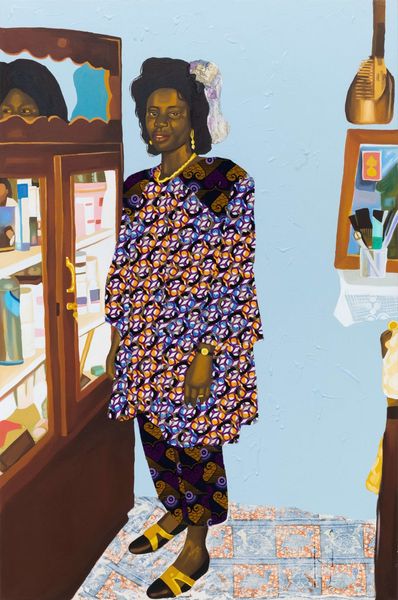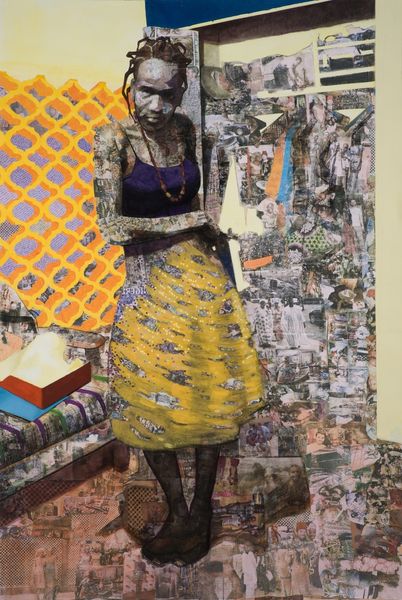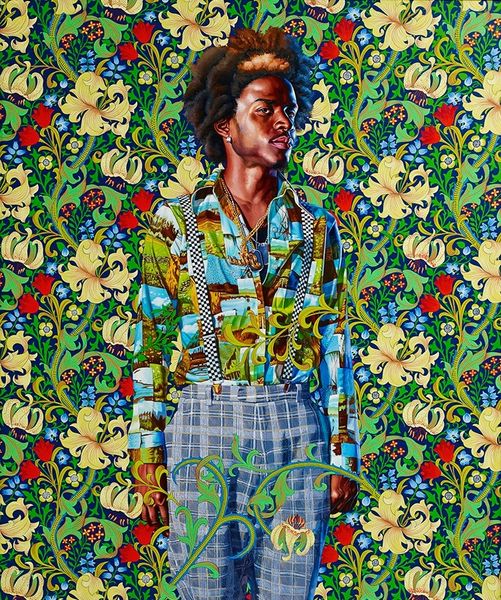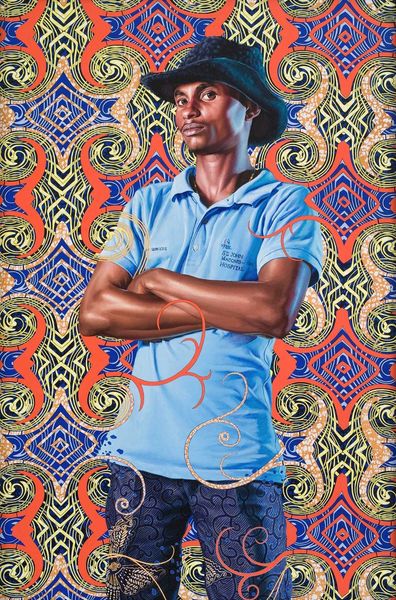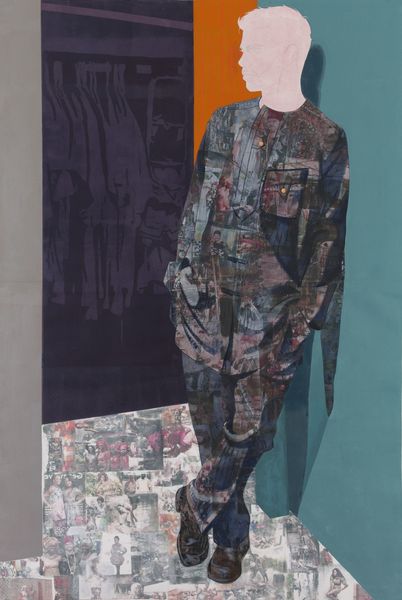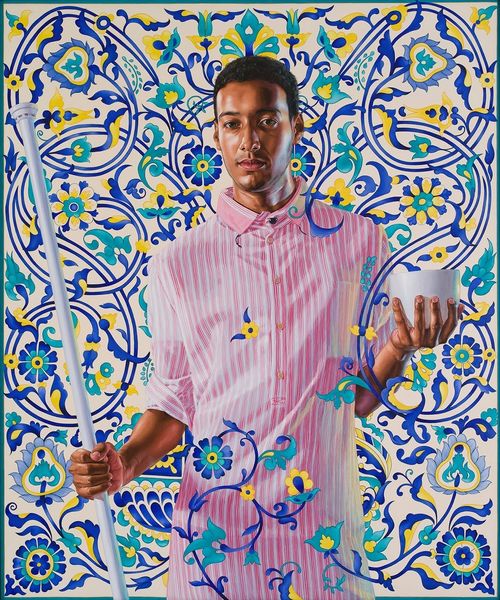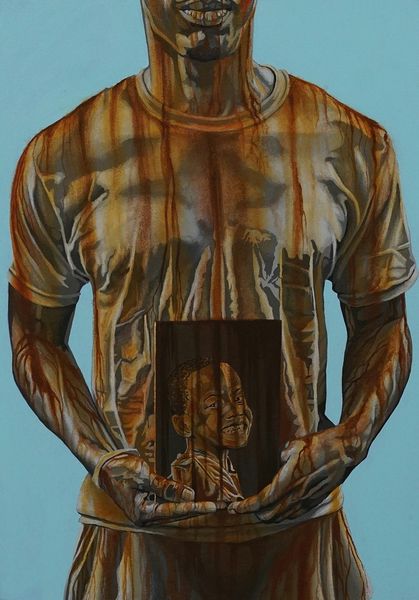
painting, oil-paint
#
portrait
#
pattern-and-decoration
#
contemporary
#
painting
#
oil-paint
#
figuration
#
postcolonial-art
Copyright: Modern Artists: Artvee
Curator: Kehinde Wiley's 2012 piece, "Napoleon In His Study," renders a contemporary Black man in the guise of the famed emperor. Acrylic paint on canvas creates this arresting image. Editor: The first thing that strikes me is the contrast between the naturalism of the figure and the artificiality of that repeating, almost hypnotic backdrop. It’s a tension that creates a very distinct atmosphere, slightly unsettling, even. Curator: Exactly. That tension is key. Wiley uses the visual language of power—the pose, the hand gesture, the imperial bearing—and grafts it onto a modern subject. It prompts a deconstruction of the symbols of authority. The floral background isn't mere decoration; it’s part of the statement. Editor: Yes, flowers, traditionally symbolic of decoration and associated with femininity in Western art. This work cleverly complicates notions of masculinity. The man's hand placed firmly across his chest may reference loyalty, even vulnerability, as an echo to historical European art. The vibrant patterns are African in origin—they speak to identity and its complex layering. Curator: I find Wiley's use of figuration quite compelling. By replacing Napoleon with a figure that confronts our contemporary values the artist pushes our ideas surrounding portraiture in art history. Think about the power relations at play, particularly within visual representation, inverting the tradition of European portraiture. The man seems quite approachable and perhaps questions conventional masculinity. Editor: I'm drawn to what is perhaps the implicit narrative. The contemporary figure, styled as a barefoot commoner in athleisure apparel, positioned against the backdrop that recalls imperial power... Is he stepping into it, commenting on it, or challenging it? The painting raises pertinent questions about who gets to occupy positions of power. Curator: Wiley offers us a re-examination of visual language and cultural memory. A fresh look at what historical references carry within a post-colonial framework. Editor: And in its audacious layering of visual information and shifting of contexts, it suggests power itself can be reimagined, remade, and made more accessible.
Comments
No comments
Be the first to comment and join the conversation on the ultimate creative platform.
